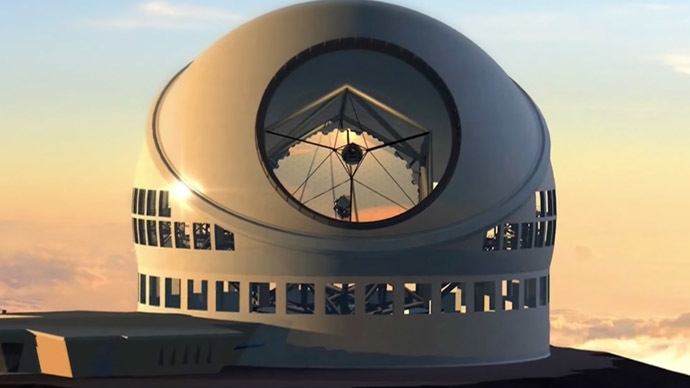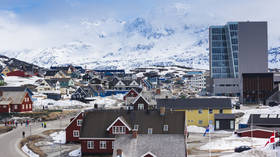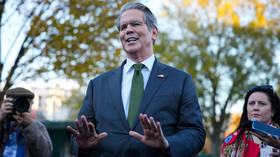Protesters block construction of massive telescope on sacred Hawaiian mountain

Builders pulled back from Mauna Kea as hundreds of protesters set up roadblocks to oppose construction of the Thirty Meter Telescope on top of Hawaii’s sacred mountain. State and local police arrested a dozen demonstrators.
Construction vehicles and their police escorts "were stopped repeatedly by more than 300 protesters who set up about two dozen 'lines of defense' across the Mauna Kea access road," reported West Hawaii Today.
Protesters say they are taking a stand to defend Mauna Kea, sacred to native Hawaiians, from the international conglomerate attempting to build the mega-telescope, also known as the TMT. They say the 18-story building represents an unacceptable desecration of the mountain.
Activists were committed to peaceful protests, one of their leaders, Kahoohaki Kanuha, told AP. "We're going to really have to stay dignified, not allowing anything, any word, any action to take us out of that state of being," he said.
As part of the blockade, some of the activists put up stone altars, known as “ahu” in Hawaiian, on the roadway. Some waved Hawaii state flags, while others used the green, red and yellow native banner known as Kanaka Maoli.
Protesters block construction of giant Hawaii telescope http://t.co/8Xrsi3IhMupic.twitter.com/W5n2ta0DuW
— Hawaii Times (@HawaiiTimes) June 25, 2015
Mauna Kea is one of the most prominent mountains in the world, rising 13,796 feet (4,205 meters) above sea level. Astronomers covet the location because the summit is far above the clouds and has a clear view of the sky for 300 days a year, with little air or light pollution.
Thirteen observatories have been built on top of the dormant volcano since the 1960s, but the TMT would be much more powerful. Currently the world’s biggest single telescope lens has an aperture of 10.4 meters, and is located in the Canary Islands.
Hawaii telescope: Hundreds of protesters aim to block Mauna Kea project http://t.co/YLFjVwuXRMpic.twitter.com/UDa2UDFfFf
— Mercury News (@mercnews) June 24, 2015
A nonprofit charged with building an operating the TMT is backed by a corporate conglomerate set up by the University of California and the California Institute of Technology, India, China, Canada and Japan. They are also working with the University of Hawaii, which has stewardship over the mountaintop. The $1.4 billion project is supposed to become operational by 2024.
Following the April protests, Hawaii governor David Ige said the state would “support and enforce” the Thirty Meter Telescope’s right to build, because the conglomerate had done “more than any previous telescope to be a good neighbor.”
Ige also announced the establishment of a Mauna Kea Cultural Council to address the natives’ concerns, and asked the University of Hawaii to start closing some of the observatories on the mountaintop, while returning to state jurisdiction “all lands not specifically needed for astronomy.” The estimated 10,000 acres thus restored would “allow for culture-based management of much of the mountain,” he said.
Construction resumes on Hawaii's Thirty Meter Telescope http://t.co/VBxzMi8WE4pic.twitter.com/YcMnokTnDk
— New Scientist (@newscientist) June 24, 2015
TMT received a permit to build and operate the observatory in April 2013 from the Hawaiian Board of Land and Natural Resources (BLNR). The sub-lease was approved by the University of Hawaii, and received a blessing from the Kahu Ku Mauna Council of native practitioners in May 2014. A ground blessing ceremony was held in October that year.
Some activists, like Kanuha, remain opposed to the construction. “When the public looks at Mauna Kea, what you see are telescopes,” he said. “So the assumption is that this mountain belongs to foreign scientists.”












